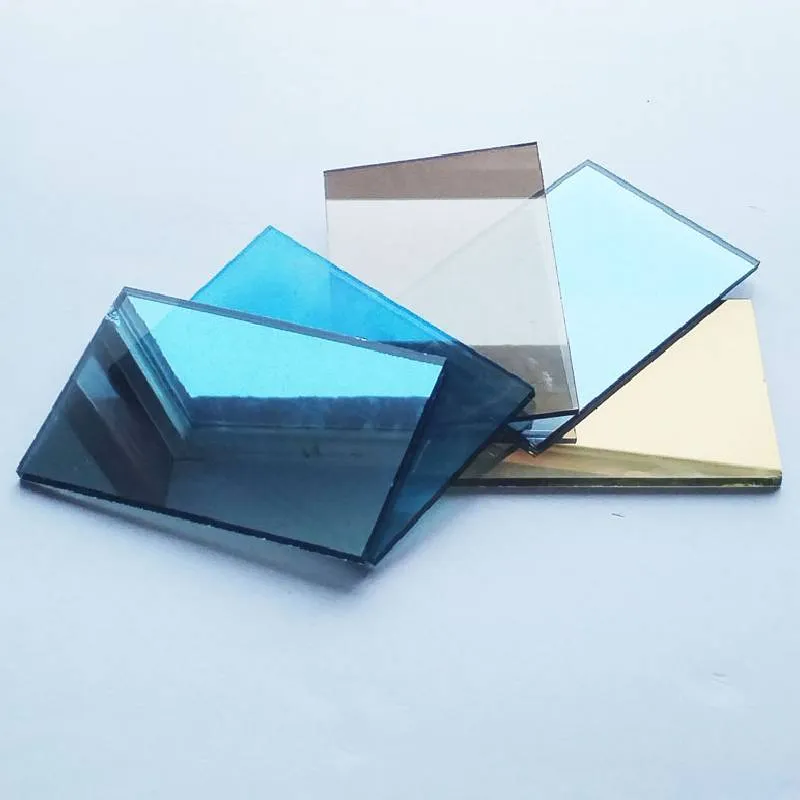The Allure of Tinted Glass Colors A Blend of Aesthetics and Functionality
In recent years, tinted glass has gained immense popularity in architectural designs, automotive manufacturing, and interior decor. Often celebrated for its aesthetic appeal, tinted glass also serves a practical purpose, transforming spaces while providing protection from the sun's harsh rays. This article delves into the various hues available in tinted glass, the reasons behind its growing trend, and its applications across different industries.
Understanding Tinted Glass
Tinted glass is essentially glass that has been treated or manufactured to have a specific color or shade. This coloration can occur during the glass-making process or through the application of a film after production. The primary colors used in tinted glass are bronze, gray, green, and blue, but by blending various shades, manufacturers can create a wide array of colors, allowing for customization to meet specific aesthetic requirements.
Aesthetic Appeal
One of the most compelling reasons for choosing tinted glass is its visual appeal. The color of the glass can significantly affect the overall ambiance of a space. For instance, blue tinted glass can evoke a sense of calm and tranquility, making it a popular choice for spas and wellness centers. In contrast, a rich bronze tint can add warmth and elegance to commercial buildings, creating an inviting atmosphere for customers and clients.
Moreover, tinted glass can complement various architectural styles, from modern to traditional. The right tint can enhance the beauty of a structure, making it stand out while ensuring it fits seamlessly into its surroundings. Creative architects and designers often experiment with different shades and intensities of tint in their projects, contributing to a more dynamic urban landscape.
Functionality and Benefits
Beyond its aesthetic advantages, tinted glass offers practical benefits that make it an attractive option for homeowners and businesses alike. One of the most significant advantages is its ability to reduce glare. Sunlight can create uncomfortable glare in homes and offices, obstructing views and causing eye strain. By selecting the appropriate tint, occupants can minimize glare without sacrificing natural light.
tinted glass colors
In addition to glare reduction, tinted glass provides enhanced UV protection. Prolonged exposure to ultraviolet rays can damage furniture, flooring, and artwork, leading to costly replacements. Tinted glass can block up to 99% of these harmful rays, helping to preserve the integrity of interior spaces over time.
Moreover, tinted glass can contribute to energy efficiency. By reducing the amount of heat that enters a building, tinted glass lessens the need for air conditioning, which can significantly lower utility bills. This energy efficiency makes tinted glass an eco-friendly choice for new constructions and renovations.
Applications Across Industries
The versatility of tinted glass has led to its wide-ranging applications across various sectors. In residential settings, homeowners use tinted glass for windows and patio doors, enhancing privacy while maintaining a stylish look. In commercial buildings, storefronts often utilize tinted glass to create a sleek, modern aesthetic while also protecting merchandise from sun damage.
Automotive industries have also embraced tinted glass, using it for windows to enhance vehicle comfort and privacy. Tinted car windows can reduce heat and glare, making rides more enjoyable for passengers and drivers alike. Furthermore, certain states have regulations regarding the level of tint allowed on vehicles, making it crucial for manufacturers to strike a balance between style and compliance.
Finally, tinted glass is increasingly used in the construction of public spaces like hospitals, schools, and shopping centers. Its ability to create a visually appealing environment while reducing energy consumption is particularly appealing to developers focused on sustainability.
Conclusion
The growing trend of tinted glass colors transcends mere aesthetics; it is a fusion of form and function. With a range of colors that cater to various design preferences and practical benefits like glare reduction, UV protection, and energy efficiency, tinted glass represents a smart choice for modern architecture and design. As we continue to prioritize sustainability and comfort in our living and working environments, tinted glass is likely to remain a staple in design palettes for years to come.
 Afrikaans
Afrikaans  Albanian
Albanian  Amharic
Amharic  Arabic
Arabic  Armenian
Armenian  Azerbaijani
Azerbaijani  Basque
Basque  Belarusian
Belarusian  Bengali
Bengali  Bosnian
Bosnian  Bulgarian
Bulgarian  Catalan
Catalan  Cebuano
Cebuano  Corsican
Corsican  Croatian
Croatian  Czech
Czech  Danish
Danish  Dutch
Dutch  English
English  Esperanto
Esperanto  Estonian
Estonian  Finnish
Finnish  French
French  Frisian
Frisian  Galician
Galician  Georgian
Georgian  German
German  Greek
Greek  Gujarati
Gujarati  Haitian Creole
Haitian Creole  hausa
hausa  hawaiian
hawaiian  Hebrew
Hebrew  Hindi
Hindi  Miao
Miao  Hungarian
Hungarian  Icelandic
Icelandic  igbo
igbo  Indonesian
Indonesian  irish
irish  Italian
Italian  Japanese
Japanese  Javanese
Javanese  Kannada
Kannada  kazakh
kazakh  Khmer
Khmer  Rwandese
Rwandese  Korean
Korean  Kurdish
Kurdish  Kyrgyz
Kyrgyz  Lao
Lao  Latin
Latin  Latvian
Latvian  Lithuanian
Lithuanian  Luxembourgish
Luxembourgish  Macedonian
Macedonian  Malgashi
Malgashi  Malay
Malay  Malayalam
Malayalam  Maltese
Maltese  Maori
Maori  Marathi
Marathi  Mongolian
Mongolian  Myanmar
Myanmar  Nepali
Nepali  Norwegian
Norwegian  Norwegian
Norwegian  Occitan
Occitan  Pashto
Pashto  Persian
Persian  Polish
Polish  Portuguese
Portuguese  Punjabi
Punjabi  Romanian
Romanian  Russian
Russian  Samoan
Samoan  Scottish Gaelic
Scottish Gaelic  Serbian
Serbian  Sesotho
Sesotho  Shona
Shona  Sindhi
Sindhi  Sinhala
Sinhala  Slovak
Slovak  Slovenian
Slovenian  Somali
Somali  Spanish
Spanish  Sundanese
Sundanese  Swahili
Swahili  Swedish
Swedish  Tagalog
Tagalog  Tajik
Tajik  Tamil
Tamil  Tatar
Tatar  Telugu
Telugu  Thai
Thai  Turkish
Turkish  Turkmen
Turkmen  Ukrainian
Ukrainian  Urdu
Urdu  Uighur
Uighur  Uzbek
Uzbek  Vietnamese
Vietnamese  Welsh
Welsh  Bantu
Bantu  Yiddish
Yiddish  Yoruba
Yoruba  Zulu
Zulu 

